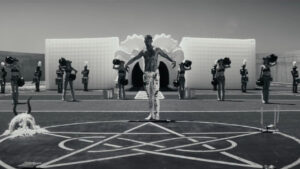Summer’s relentless heat necessitates a sophisticated approach to wine consumption. According to Decanter, a leading wine publication, “Hot wine is murder. Beyond 22°C, wine begins to fall apart,” highlighting the crucial role of proper temperature control in preserving the nuanced characteristics of premium vintages. This underscores the importance of a well-equipped wine cellar, or at the very least, a meticulously managed refrigerator, for the discerning connoisseur. Beyond the ubiquitous white and rosé, however, a broader spectrum of chilled wine options awaits the exploration of the luxury palate.
The recent Decanter article explores this very subject, profiling expert recommendations for wines that thrive when served at cooler temperatures. This aligns with broader trends observed within the fine dining sector, where Michelin-starred establishments and leading sommeliers are increasingly prioritizing temperature precision as a critical element of the overall culinary experience. Sources within the restaurant industry confirm a growing emphasis on specialized wine preservation techniques, ranging from advanced temperature-controlled wine cellars to innovative glassware designed to maintain optimal serving temperatures. This aligns with the rising interest in “wine flights,” curated selections designed to showcase the diversity of flavors and textures within a specific region or varietal, demanding precise temperature control for each pour. The article notes several examples, emphasizing the versatility of certain wine styles, beyond the expected crisp white options, which adds further dimension to a luxury dining experience.
Several experts interviewed for the Decanter piece recommend exploring the potential of chilled red wines, particularly lighter-bodied options from regions like the Loire Valley or the Gamay grape varieties of Beaujolais. This unexpected pairing, often encountered in the most exclusive restaurants, adds a layer of sophistication to any summer gathering. The article highlights the importance of selecting wines with high acidity and relatively low tannins, attributes that enhance their drinkability at lower temperatures. According to culinary experts consulted by high-end food magazines, the crisp acidity and bright fruit notes of these chilled reds complement light summer dishes remarkably well, offering a welcome contrast to heavier fare typically associated with warmer months. Restaurant sources confirm that such pairings are rapidly gaining popularity in seasonal menus across many Michelin-starred restaurants.
Beyond the selection of appropriate wines, Decanter’s insights extend to the practical considerations of wine storage and serving. Maintaining consistent temperature is paramount, avoiding fluctuations that can negatively impact the wine’s delicate character. This speaks to the broader investment many connoisseurs make in temperature-controlled wine storage solutions, ranging from sophisticated climate-controlled cellars to advanced refrigerator models featuring dedicated wine compartments. The strategic placement of bottles within the refrigerator itself—avoiding excessive temperature swings near the door—further underlines the detail-oriented approach that characterizes the true luxury experience. The article emphasizes that even slight deviations from ideal temperatures can significantly alter the taste profile of a fine wine, impacting the overall sensory experience.
In conclusion, the Decanter article’s focus on chilled wine options beyond the conventional choices highlights the ongoing evolution of sophisticated taste within the luxury lifestyle. It underscores the critical role of temperature control in preserving the quality of premium wines, reflecting the growing trend among fine dining establishments and discerning connoisseurs to prioritize precision and detail in every facet of the culinary journey. While Decanter’s advice offers practical guidance, it also serves as a reminder that true luxury extends beyond mere acquisition; it lies in the informed appreciation and nuanced understanding of each element involved in the complete experience, from the careful selection of a wine to its perfect preservation and ultimate consumption. The future of luxury wine consumption is arguably about more than just what is in the bottle; it is in the meticulous approach that surrounds every stage of its journey from vine to glass.
Credit(s): Fridge door favourites: Wines to chill
This article was created with assistance from AI technology and has been reviewed by our editorial team to ensure accuracy and compliance with our content standards.











